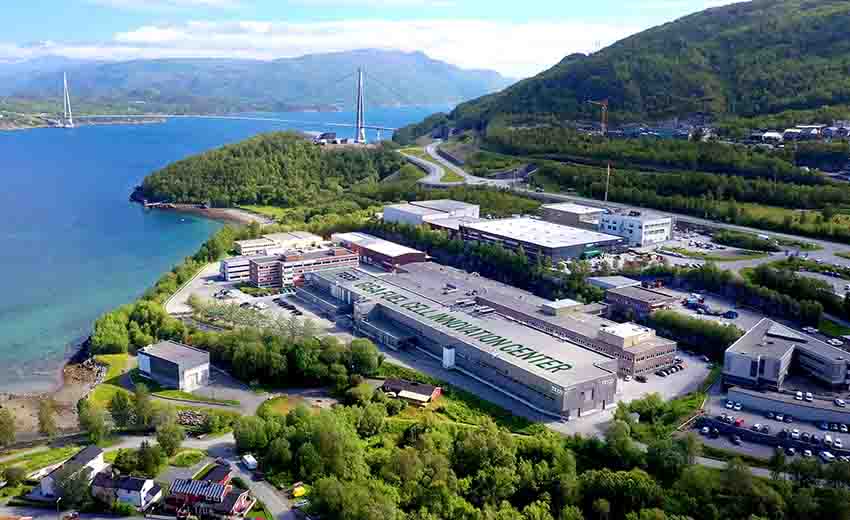TECO 2030 was established in 2019 with an intention of accelerating the transition to renewable fuels in the heavy-duty and maritime industries. The product offering is a purpose developed heavy-duty marine Proton Exchange Membrane Fuel Cells (PEMFC). Fuel cells generate electricity through a chemical reaction between hydrogen and oxygen, producing only water and heat as by-products. This makes fuel cells a clean and renewable energy source, compared to traditional fossil fuels such as diesel and heavy fuel oil, which emit harmful pollutants and contribute to global warming.
Interview with Cristian Skajem, Head of Communications at TECO 2030
Easy Engineering: What are the main areas of activity of the company?
Cristian Skajem: The main focus for the company is to manufacture a standardized fuel cell product for use in heavy-duty machineries. Through our Innovation Center and Gigafactory facility in the Northern part of Norway, we aim to serve a global market with leading fuel cell technology and build competence to the hydrogen as a clean energy carrier. The fuel cell production capacity will be built up through 2023 and 2024, targeting an output capacity of 120 MW of fuel cells in 2024, 400 MW in 2025 and 1.6 GW in 2030.
E.E: What’s the news about new products?
C.S: TECO 2030 is constantly evolving its product portfolio in order to deliver leading solutions to an industry which pollutes a lot of harmful emissions. The TECO 2030 Fuel Cell’s are currently under development and will be market ready later this year.
E.E: What are the ranges of products?
C.S: TECO 2030 has purposely developed a marine and heavy duty PEMFC with a standard energy output of 400kW, which is a scalable and modular system. The system is developed to a “one-size-fits-all” strategy and can be scaled up to the megawatts required by our clients.

E.E: At what stage is the market where you are currently active?
C.S: The fuel cell market is still in the emerging stage in terms of developments across the value chains but is growing rapidly, driven by the increasing demand for clean and efficient energy. Fuel cells are being used in a variety of applications, including transportation, stationary power generation, and portable power. The overall market size is expected to continue to increase as the technology improves, costs decrease, and more applications are developed.
The fuel cell market is expected to boom in the next years and decade, as the global race to net zero is well under way. Regulations on emissions are increasing around the world, and the emission trading schemes will certainly boost the transition towards renewable fuels.
E.E: What can you tell us about market trends?
C.S: There is increasing demands for clean and sustainable energy is boosting the adoption of fuel cells for transportation, portable and stationary applications. The advancements in fuel cell technology is improving, making fuel cells cost-competitive, energy efficient and improved performance when comparing the technology to traditional combustion engines. There is also, as mentioned several government incentives and policies for implementing fuel cells and alternatives for clean energy.
The needed capital and investments are also more available compared to 10-15 years ago to grow activities and getting products to the market faster.

E.E: What are the most innovative products marketed?
C.S: TECO 2030’s flagship product is its FCM400. A 400kW PEM fuel cell module for marine and heavy-duty applications. Developed from scratch through a partnership with Austrian-based AVL, the module has been designed based on specifications for marine requirements, we have made every design choice during product development towards this goal.
At the start of the development process, the company underwent analysis of several different fuel cell types, concluding that PEM fuel cell technology was the only one sufficiently mature for commercialization at that time.
The benefits of PEM fuel cells are that they are very compact, lightweight and can be operated dynamically. They have very similar properties to a marine 4-stroke engine.
We foresee that PEM fuel cells will typically be used for propulsion within short-sea shipping and inland waterways, and for auxiliary power generation for ships of all sizes when in port.

E.E: What estimations do you have for 2023?
C.S: During the second half of 2023, we will demonstrate the first TECO 2030 fuel cell system in operation for Implenia Norway, a subsidiary of Implenia AG. The purpose of the project is to demonstrate off-grid zero-emission electricity production.
Under the order from the Swiss construction company, two FCM400 fuel cell modules, offering 800kW of power will be delivered, with an option for two more to be supplied, doubling the containerised solution’s output to 1600kW.
Furthermore, TECO 2030 will also deliver four fuel cell stacks to its development partner, AVL, which will be integrated into their HyTruck system, seeing the company’s technology on public roads in a 40-tonne vehicle this summer.

